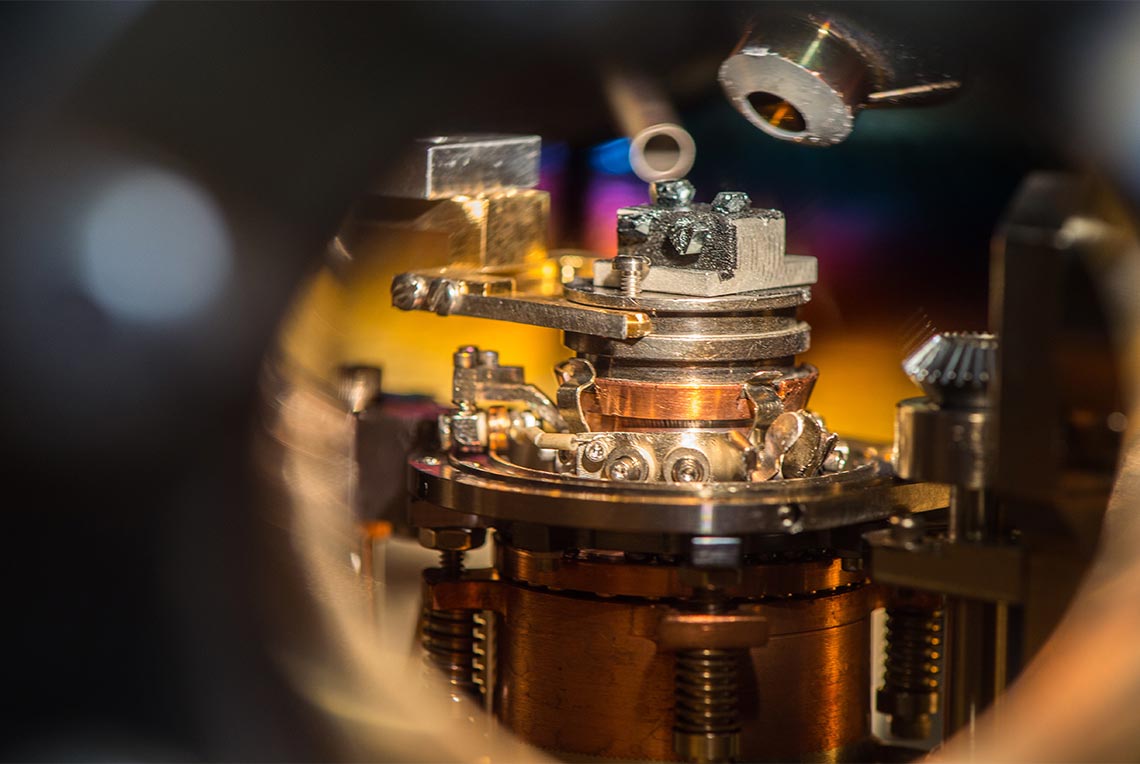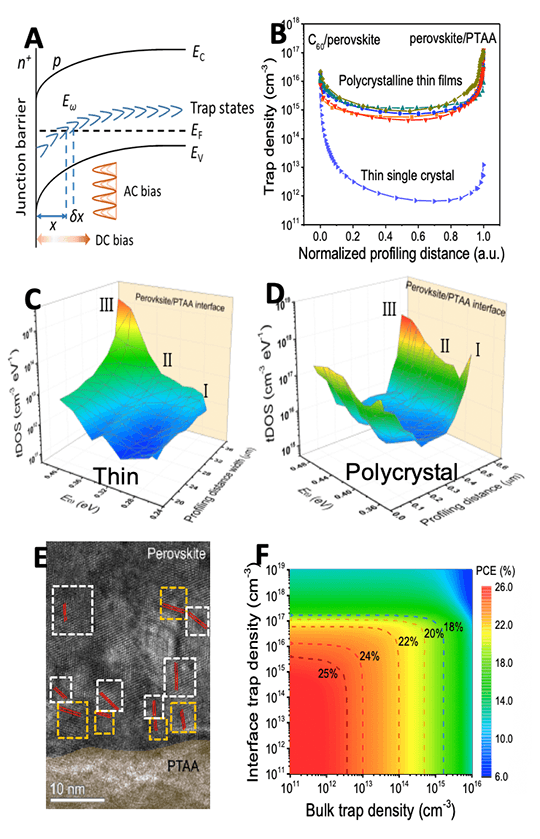Resolving Spatial and Energetic Distributions of Trap States in Metal Halide Perovskite Solar Cells
March 20, 2020
Polycrystalline perovskite solar cell efficiencies can be improved by reducing both the surface and bulk trap densities. The understanding of defect density and their distribution can also facilitate control over of spin, charge transport, charge recombination, and degradation.
Scientific Achievement
We mapped the distributions of charge traps in perovskite single crystals and thin films in real device geometry, revealing that deep traps mainly locate at perovskite surfaces, limiting the efficiency of both perovskite single crystal and polycrystalline thin-film solar cells.
Significance and Impact
Knowing the spatial and energetic distributions of charge traps in perovskite materials is crucial to understand the charge recombination behavior, while it has never been achieved using known techniques. This work applied a new technique to successfully profile both the spatial and energetic distributions of trap states in perovskite, pointing out an important direction for the further improvement of perovskite materials and devices such as solar cells.
Research Details
- Charge traps were measured by drive-level capacitance profiling (DLCP) technique.
- The trap density and distribution in perovskite single crystals and polycrystalline thin films were compared.
- The influence of the trap density and distribution on perovskite solar cell performance were investigated.










